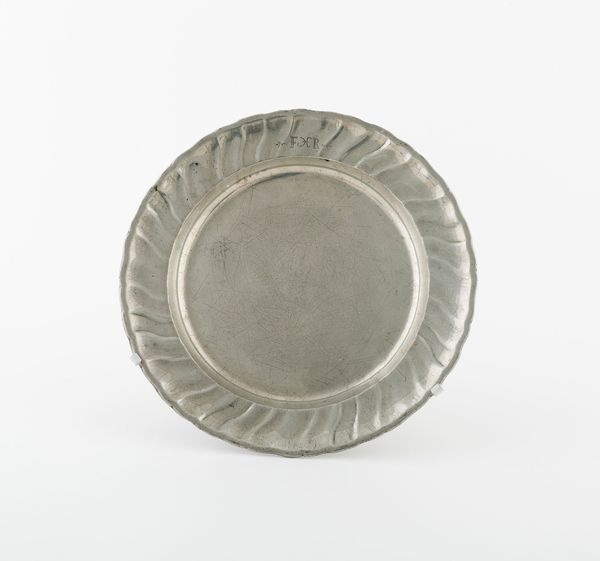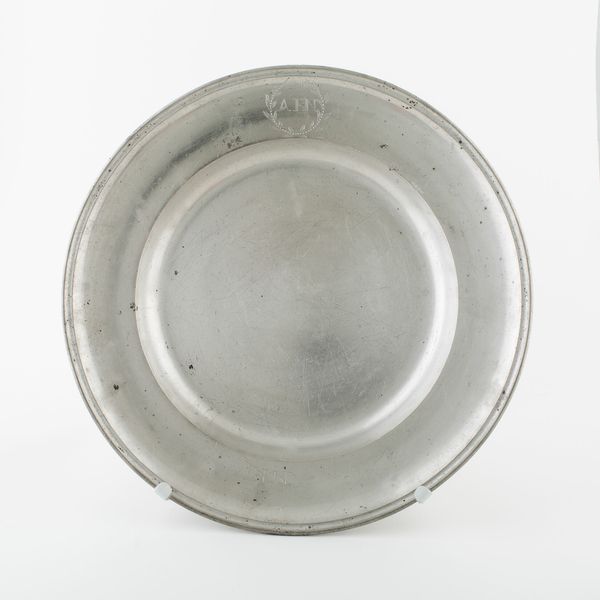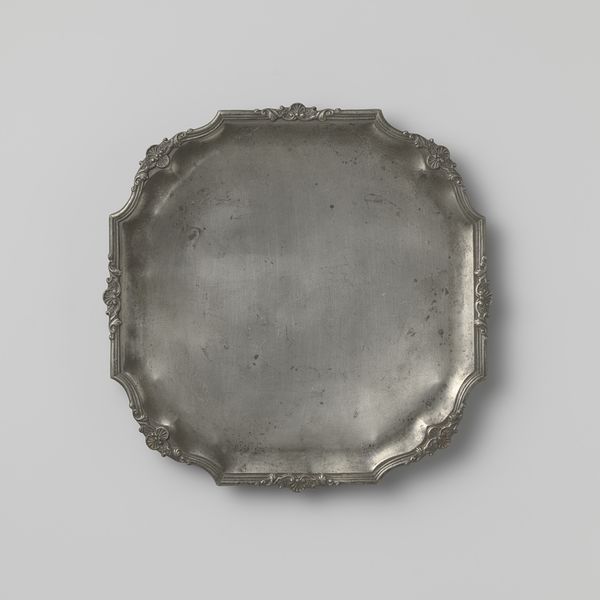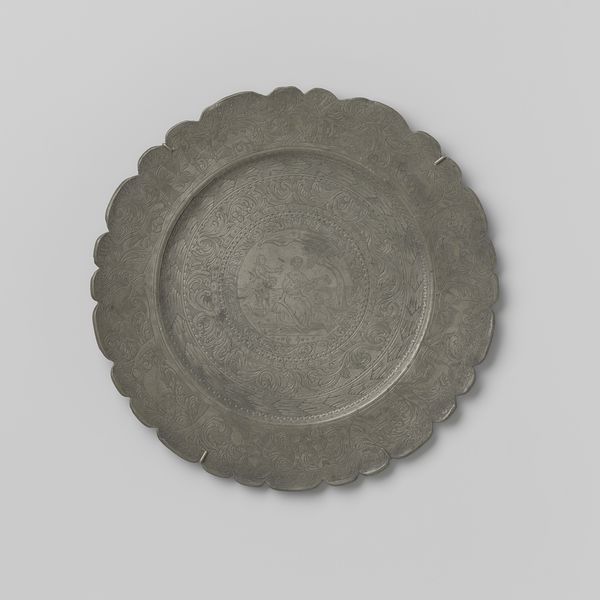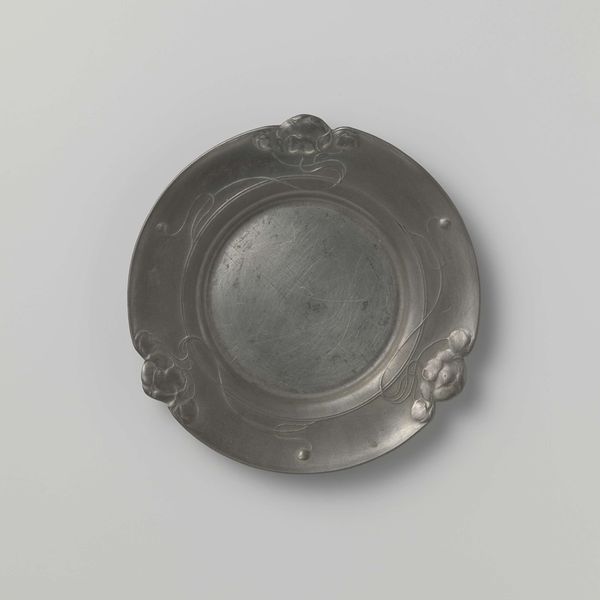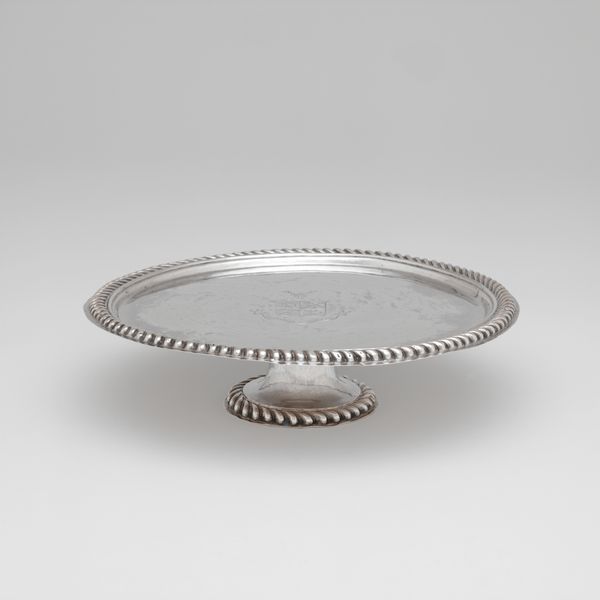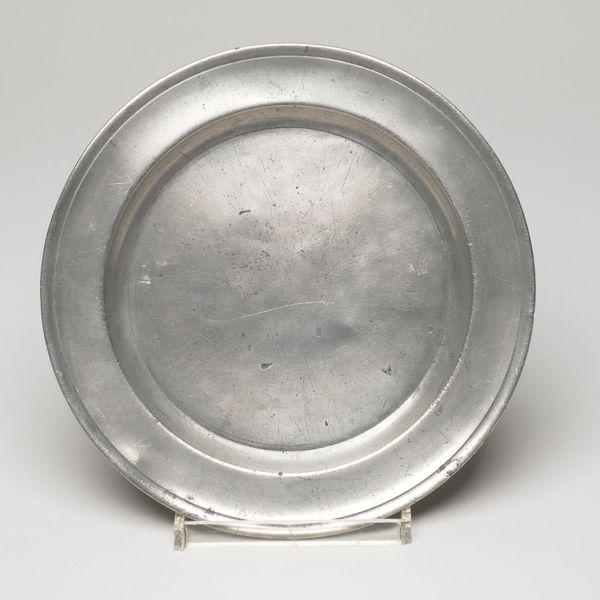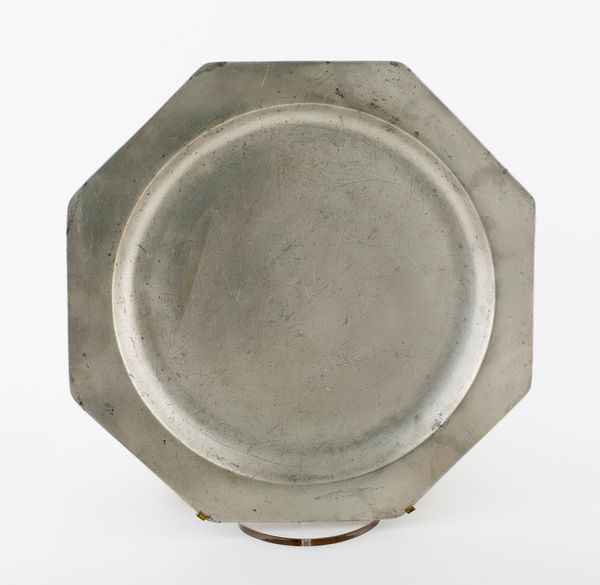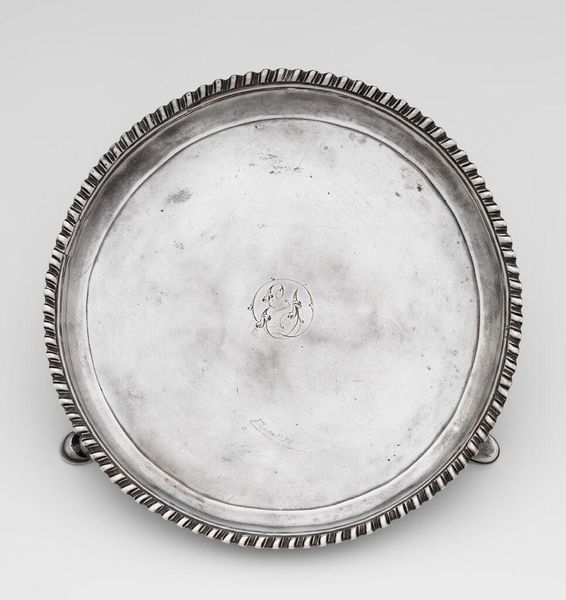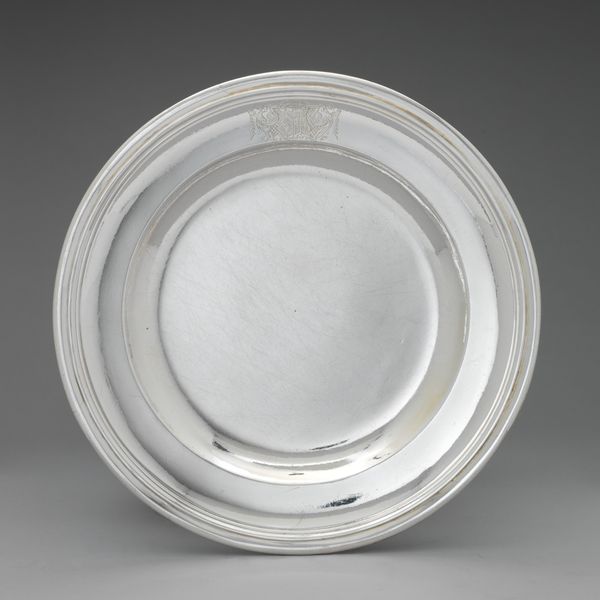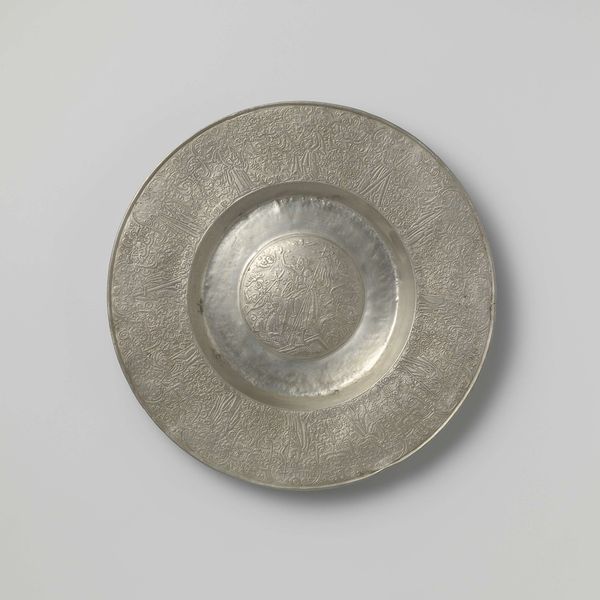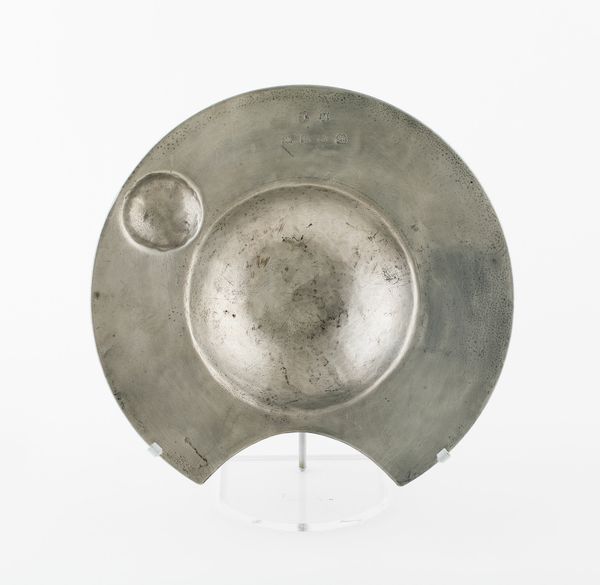
ceramic, earthenware
#
ceramic
#
romanesque
#
vessel
#
earthenware
#
ceramic
#
decorative-art
Dimensions: 2.2 × 24.1 cm (1 × 9 1/2 in.)
Copyright: Public Domain
Curator: Here we have a plate from around 1745, made of earthenware, here at the Art Institute of Chicago. Editor: Immediately, the reflective surface and muted color palette strikes me. There's a subdued elegance to its simplicity and layered concentric composition. It almost feels like gazing into a still pool. Curator: It's important to remember the societal context for such items. During that period, decorative arts reflected wealth and status. Even a seemingly simple object like this plate served a crucial function in constructing and displaying social identity through everyday life. Editor: Agreed, but looking purely at the form, consider the carefully crafted curves of the rim—that scalloped edge that catches the light, contrasting with the perfectly smooth, slightly concave center. The plate's ridges and contours showcase both refinement and functionality. Curator: The material, earthenware, also plays a key role. Unlike precious metals or porcelain, earthenware would have been relatively more accessible. Its inclusion speaks to the shifting social landscape where consumer goods broadened the scope of who could afford domestic finery. Editor: I am captivated by how light interacts with the metallic glazing—creating subtle gradients and reflections that draw the eye inward. Semiotically, the empty center asks what might occupy it—symbolically, it is filled with possibility, sustenance, or communal offering. Curator: We must also remember the craftspeople and the workshops where these plates were produced, these locations themselves being enmeshed in evolving global trade networks and emerging industrial processes. They weren't created in a vacuum, these are testaments to human ingenuity shaped by broader currents. Editor: The restraint intrigues me; such discipline elevates this piece. Its tactile presence, its visual reticence demands close, considered viewing. We fill the frame ourselves, really, imagining stories, reflecting inwardly. Curator: Indeed. So, while it’s an everyday item, a humble plate, it speaks volumes about cultural production, social stratification, and how even the most commonplace items carry potent messages about our shared past. Editor: And to me, the enduring quality lies in that deceptively quiet arrangement and surface play; even outside the dinner table it sparks a sensory engagement and personal consideration which feels undeniably relevant.
Comments
No comments
Be the first to comment and join the conversation on the ultimate creative platform.
